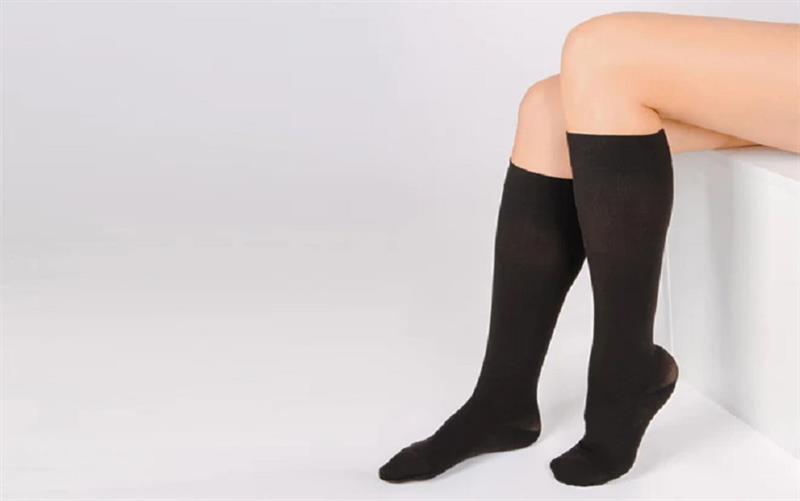
After a lengthy travel, swelling legs and feet are painful but not unusual. The veins in your legs have a difficult time returning blood to your heart when you spend a lot of time in a small location and are unable to move around much. Your lower legs may experience pressure and edoema as a result.
Compression socks are increasingly common as a way to reduce swelling after flights. While wearing compression socks while flying can offer certain advantages, there are a few things to consider first. This article will go through the sorts of socks, who should and shouldn't wear them, and everything else you need to know about wearing compression socks for flying.
Concerning compression socks
The clothing items compression socks and compression stockings constrict and increase circulation in your calves and feet. These types of socks and stockings have a small amount of elasticity built into their fabric to help them maintain their shape while fitting closely against your body.
Compression socks typically come in three different categories.
1. Socks with graduated compression
Gradually increasing compression socks put pressure on your ankles to promote blood flow. The socks loosen up as they travel up your leg. Most often, a prescription and a professional fitting are necessary for graduated compression stockings. They are often made to satisfy specific medical requirements for length, strength, and flexibility.
2. Non-therapeutic support garments
Greater flexibility is a feature of non-medical support hosiery compared to graduated compression socks. They are easily accessible in stores and online without a prescription. Non-medical support hosiery are frequently worn to alleviate and promote circulation in fatigued legs.
3. Anti-embolism tights
Deep vein thrombosis (DVT), which is preventable with anti-embolism stockings. These socks can provide varying degrees of compression. Anti-embolism stockings are often designed for individuals with limited mobility. Similar to graduated compression socks, a prescription is needed to buy these stockings.
Advantages of wearing compression socks when travelling by air
- There's a good probability that you won't move around much during a lengthy flight (5 hours or more).
- Circulation between your heart and lower legs slows down when you're confined to a tight location and aren't moving around.
- Your calf muscles are responsible for returning blood from your lower body to your heart via your circulatory system.
- Circulation is less effective when these muscles aren't contracting. Swelling, tingling, and soreness are possible side effects.
- You may also be more susceptible to blood clots and pulmonary embolisms as a result of the decreased circulation.
- Nonmedical support hosiery are the compression socks that are typically advised for travel if you don't have a prescription for them.
- These compression socks are simple to buy at pharmacies or online. You can select a compression level based on how comfy it is for you.
When to wear them
You might wish to practise putting on compression socks a few times prior to your travel if you want to wear them while flying. It can take some getting used to getting them on your feet, especially in the cramped quarters of an aeroplane. Perhaps shortly before you board, when you're waiting at your gate, is the perfect time to put them on.
length of time to wear them
Compression socks are comfortable to wear for lengthy periods of time, so you can put them on at home before starting your trip to the airport. After a few hours of continuous use, however, pain and other adverse effects can start to manifest. For a list of probable adverse effects, see the section below.
How to fly safely and prevent blood clots
There are other ways to prevent blood clots while travelling besides compression socks. Other advice is:
- Put on comfortable, loose-fitting clothing that promotes healthy circulation.
- Make the most of the available legroom by storing all of your items in the overhead bins.
- Be sure to stay hydrated both before and throughout the travel.
- While at the airport and on the flight, stay away from items that are heavy in sodium and salt.
- During lengthy flights, if allowed, stand up and walk the length of the aircraft every hour or so.
Compression socks while flying: possible negative effects
There are various negative effects of compression socks. Although you may be accustomed to wearing compression socks at home, the dry air, confined spaces, and unpredictable nature of flight travel can increase the likelihood of negative effects.
When wearing compression socks while flying, potential negative effects include:
- Itching
- Decrease in circulation
- Bruising that hurt or chafe and skin that is broken
- Keep in mind that adverse effects are less likely to happen when your compression socks are fitted appropriately.
- Utilising compression socks improperly or excessively can increase your risk of experiencing uncomfortable sensations.